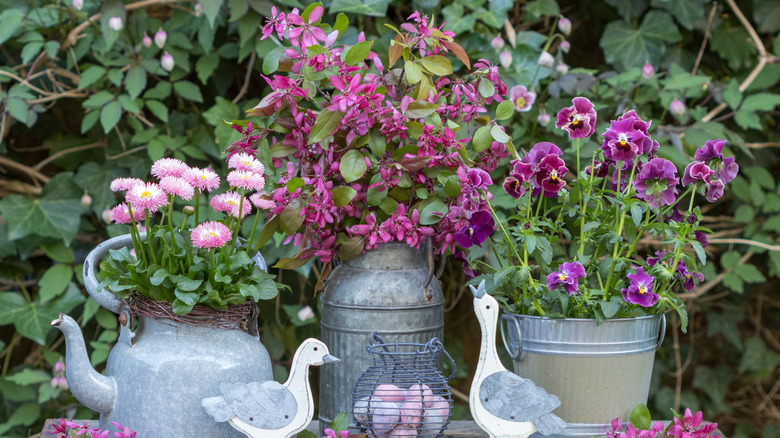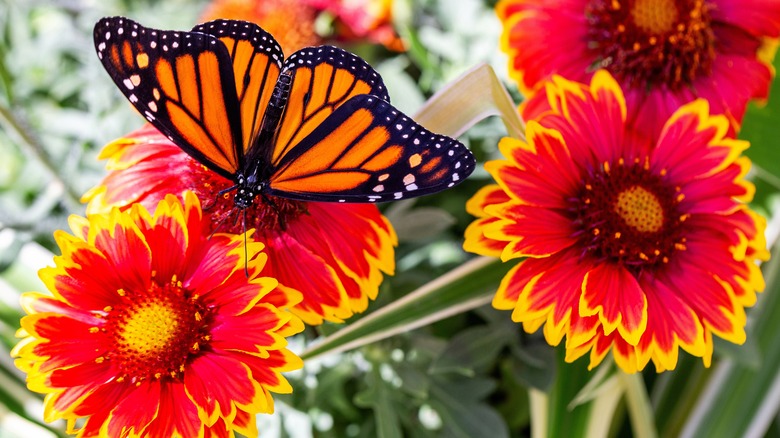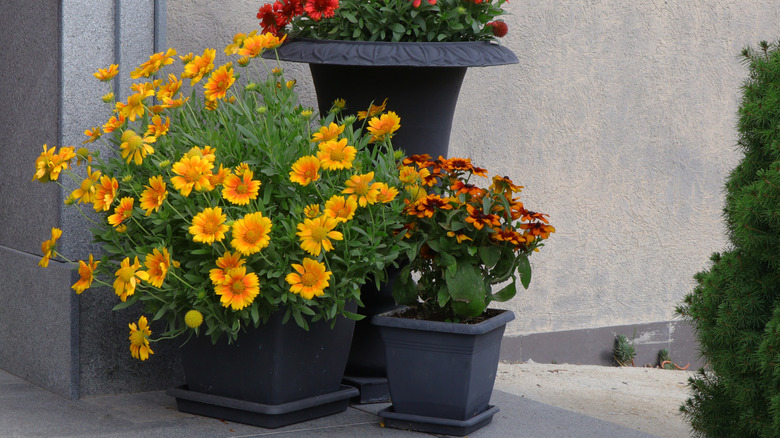The Colorful & Hardy Perennial You Can Grow In Containers That Butterflies Love
If you're after a flower that can handle sun, heat, and a bit of neglect, all while being vibrant and beautiful, the blanket flower (gaillardia spp.) is the kind of stunning plant that thrives in a container and ticks all of your boxes. With its vivid shades of yellow, red, and orange, and its daisy-shaped blooms, this native perennial offers months of nonstop color, and a natural wildflower charm that's right at home on a patio, porch, or sunny balcony.
Besides its striking hues, the blanket flower is also tough and acts as a pollinator haven – butterflies, in particular, love it thanks to its bright, open-face blooms. Hardy in USDA Zones 3 through 8, the blanket flower is a cross between the gaillardia aristata (a perennial) and gaillardia pulchella (an annual), but leans more towards the perennial side. It also tolerates heat and drought well, can survive poor soil conditions, and can even withstand your local deer population. These resilient traits make it the perfect low-maintenance, yet colorful addition to your flowerpots.
Why butterflies and other pollinators love blanket flowers
Don't be surprised if you notice some bees or butterflies buzzing around your blanket flowers soon after they bloom. These pollinators don't just find these flowers by accident, they actively seek them out. The two-toned, brightly colored blooms of the blanket flower act as a sort of beacon to pollinators, who rely heavily on visual cues, like vibrant color patterns, when foraging for food sources. Butterflies and hummingbird are particularly attracted to red and yellow flowers, which is why you'll see so many of these insects around your blanket flowers.
In addition to their eye-catching appearance, the structure of the gaillardia's daisy-like blooms makes them especially inviting. Their broad, open faces make it easy for pollinators to land, allowing butterflies and bees to access the nectar with minimal effort. Even better, blanket flowers are known for their long blooming season, which stretches from late spring through early fall. This all-summer-long availability ensures that pollinators have a consistent, high-quality nectar source to rely on for several months, making blanket flowers a vital part of a pollinator-friendly garden.
How to grow blanket flowers in containers
While the blanket flower may look like it belongs in a wildflower meadow, it's just as suited to pots, planters, and containers as it is to borders and flowerbeds. The blanket flower is easy to grow from seed. Choose a container that's at least 10 inches in diameter with good drainage. Fill it with a well-draining potting mix, something that has good aeration, and that can be mixed with a little sand to mimic the dry conditions gaillardias prefer.
Blanket flowers thrive in sunlight, so be sure to place your container where it will receive at least six hours of direct sun each day. While they can handle drought once established, regular watering is important early on, so be sure to water when the top inch of soil feels dry and allow any excess water to drain completely. These low-maintenance plants also benefit from regular deadheading, to encourage continuous flowering throughout the summer.
So, whether you're a novice gardener or an experienced green thumb looking to brighten your doorstep or patio, blanket flowers are an excellent choice to add bright hues to your home. Plant them in containers and watch them bloom across the warmer months, attracting butterflies and adding a bright, wildflower charm to your space.


